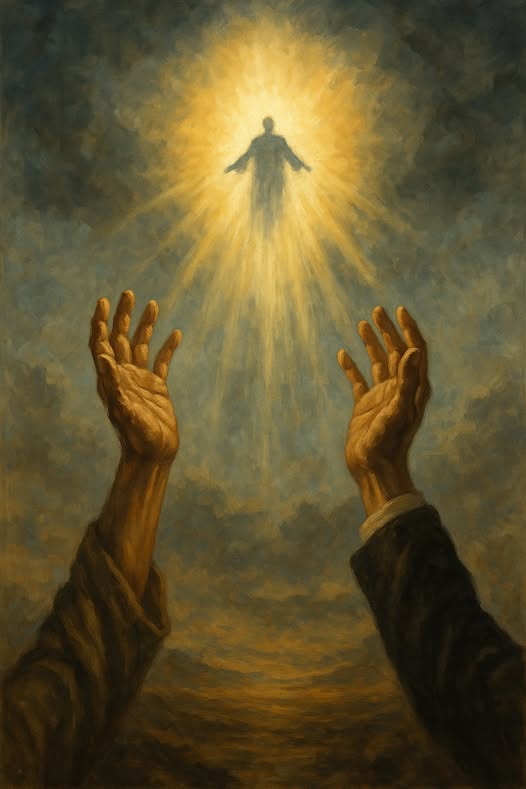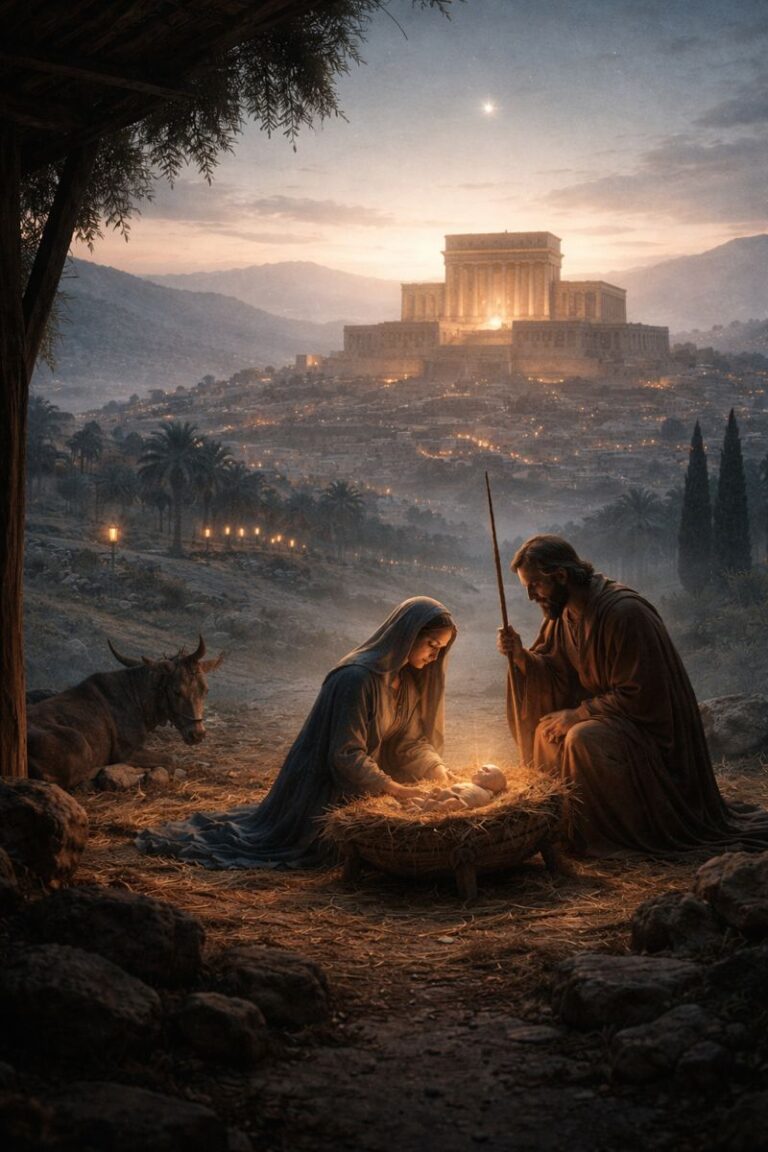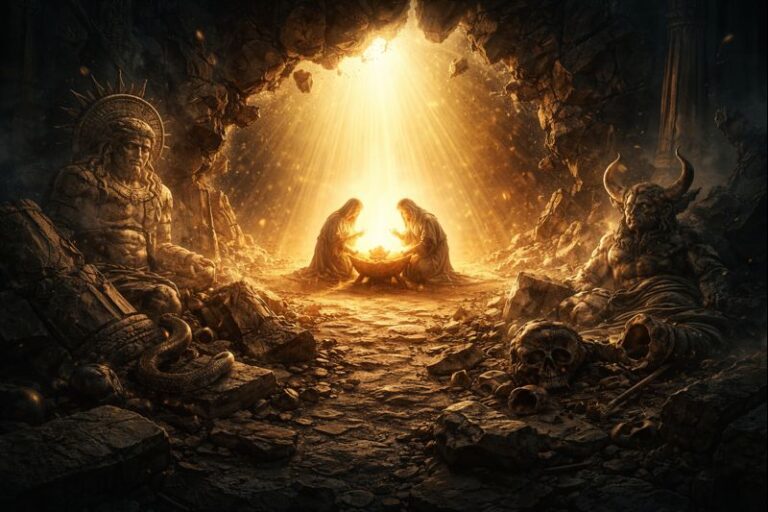
Many Christians, especially those who hold to a Pre-Tribulation Rapture view, believe that the Church will be removed from the earth before the wrath of God is poured out in the end times. This view relies heavily on certain New Testament verses and assumes that the entire Tribulation period is equivalent to God’s wrath. However, a thorough examination of Scripture shows a much more consistent and historically rooted pattern—one in which the faithful remain on earth, are preserved by God, and bear witness through times of divine judgment.
Understanding the Wrath of God in Scripture
God’s wrath in the Bible is not irrational anger. It is His holy and just response to sin, rebellion, and injustice. In the Old Testament, this wrath often appears in the form of plagues, famines, foreign invasions, and exile. These were not expressions of random fury but rather measured judgments that came after extended warnings and calls to repentance.
For example, in Deuteronomy 28, Israel is warned of the curses that will come upon them if they abandon the covenant. These include economic ruin, defeat in battle, disease, and exile. When the people persisted in idolatry and injustice, God’s wrath came through the destruction of the northern kingdom by Assyria and the exile of the southern kingdom to Babylon.
Importantly, faithful individuals were often caught up in these national judgments. Daniel and his friends were taken into Babylon despite their personal righteousness. Jeremiah, though faithful to God’s call, suffered mistreatment and lived through the fall of Jerusalem. Ezekiel, likewise, was taken into exile and became a prophet among the captives. Their presence during judgment did not mean God was punishing them personally. Rather, they were preserved and used by God as witnesses and intercessors.
This same pattern is evident in other events. Noah lived during a time of global corruption and was preserved through the flood. Israel remained in Egypt during the plagues, yet God distinguished and protected them, especially from the later judgments. The principle is clear: God does not always remove His people from wrath, but He does preserve them through it.
Is the Tribulation the Wrath of God?
A central claim of the Pre-Tribulation Rapture view is that the entire seven-year Tribulation is the outpouring of God’s wrath on the earth. However, the Bible never directly equates the full Tribulation period with God’s wrath. Instead, Scripture presents a more deliberate timeline in which divine wrath is delayed, targeted, and brought to completion near the end.
In Revelation 6, when the Lamb begins to break the seals, the earth experiences conquest, war, famine, and death. These disasters bring widespread suffering, but they reflect what happens when God removes His restraint and allows the consequences of human depravity and demonic influence to play out. Revelation 6:8 notes that authority was given to these forces to kill a fourth of the earth, implying that they operate under God’s permission, not as direct expressions of His wrath.
Revelation 15:1 clarifies when God’s wrath is fully poured out: “Then I saw another sign in heaven, great and marvelous, seven angels who had seven plagues, which are the last, because in them the wrath of God is finished.” The Greek word used for “finished” here points to the finality and fullness of God’s wrath. This means the bowl judgments of Revelation 16 are not the start of God’s wrath, but the climax of it. The earlier stages of the Tribulation are better understood as part of a prolonged judgment process, not as the pouring out of divine wrath in its entirety.
Revelation 12 and 13 make it clear that a significant portion of the Tribulation is characterized by Satan’s fury, not God’s. After being cast down to earth, the dragon goes to make war on those who hold to the testimony of Jesus. The beast is given power to conquer the saints, and the world is forced to worship him. These events represent a time of satanic persecution rather than divine judgment. The faithful are targeted specifically because they belong to God, not because they are the objects of His wrath.
The bowl judgments, however, are clearly distinguished. They fall on those who have taken the mark of the beast and worshiped his image. Revelation 16:2 says that the first bowl was poured out on those people, and they alone received the painful sores. This selective targeting mirrors the judgments in Egypt, where God protected His people while judging their oppressors. The bowls are not general suffering. They are precise and retributive acts of divine justice.
This pattern aligns with God’s consistent method throughout Scripture. In Genesis 15:16, God tells Abraham that the iniquity of the Amorites is not yet complete, delaying judgment until their wickedness reaches its full measure. Similarly, during the Tribulation, God’s final wrath is withheld until people have hardened themselves beyond repentance. The ministry of the two witnesses, the sealing of the 144,000, and angelic proclamations in Revelation 14 all show that God’s mercy is still extended, even deep into the period of judgment.
In conclusion, the entire Tribulation cannot be equated with the wrath of God. The earlier judgments involve human sin, demonic influence, and satanic persecution. The fullness of God’s wrath is reserved for the bowl judgments at the end. This distinction is critical, because it means that the presence of believers during much of the Tribulation does not violate God’s promise that His people are not appointed to wrath. Rather, it reflects the biblical pattern of God preserving His people during judgment while still calling the world to repentance.
Examining Key Verses Used for a Pre-Trib Rapture
1 Thessalonians 5:9 says, “For God has not destined us for wrath, but to obtain salvation through our Lord Jesus Christ.” This verse is often used to suggest that Christians will not experience the Tribulation. However, the context is about final judgment and eternal destiny, not earthly suffering. Earlier in the same letter, Paul says believers were destined for affliction and that he warned them in advance of trials they would face. The kind of wrath believers are spared from is eternal condemnation, not temporal hardship.
Revelation 3:10 is another commonly used verse: “I will keep you from the hour of trial that is coming on the whole world.” The Greek phrase “tereso ek” does not necessarily mean removal. It can mean protection while within. In John 17:15, Jesus uses similar language when He prays that His followers be kept from the evil one, not taken out of the world. This aligns with the biblical pattern of preservation rather than escape.
The Pattern of the Faithful During Judgment
Throughout Scripture, God has preserved His people through judgment rather than removing them. During the flood, Noah remained on earth in the ark. During the plagues, Israel was in Egypt but shielded. During the Babylonian exile, faithful prophets and believers were used by God in the midst of national punishment. This pattern continues into Revelation. The 144,000 are sealed during the judgments. The two witnesses prophesy in the middle of the chaos. The saints are called to endure and overcome by the blood of the Lamb and the word of their testimony.
The Timing of the Rapture
In 1 Thessalonians 4:16–17, Paul describes the coming of the Lord and the resurrection of the dead in Christ. This is a public, visible event, not a secret removal. The Lord descends with a shout, the dead rise, and the living are caught up together to meet Him. This passage aligns with other end-time texts, such as Matthew 24 and 2 Thessalonians 2, where the coming of Christ occurs after the revealing of the man of sin and great tribulation.
Paul explicitly says in 2 Thessalonians 2 that our gathering to the Lord will not occur until after the rebellion and the revealing of the lawless one. This puts the resurrection and rapture after the start of the Tribulation, not before it.
The Role of the Church in the Tribulation
Rather than being removed, the Church is called to endure and bear witness during the time of trial. Revelation 12 describes believers overcoming the dragon by their testimony and faithfulness, even unto death. Revelation 14 speaks of the perseverance of the saints. The Church is not absent, it is active—proclaiming, resisting, and shining as lights in the darkness.
Conclusion: Not Destined for Wrath, But Still in the Storm
The promise that believers are not destined for wrath is true. But that does not mean we are removed before every storm. Scripture shows us that God distinguishes His people and protects them, often in the midst of judgment. Whether it was Noah, Moses, Daniel, or the early Church, God has always used His faithful as witnesses during times of judgment.
Jesus never promised escape from tribulation. He promised presence in it. “In this world you will have tribulation,” He said, “but take heart, I have overcome the world.” Our hope is not in a secret escape, but in a sovereign God who keeps His own through the fire and uses them as instruments of mercy and truth in a world under judgment.
Discussion Questions
- How does the biblical pattern of God preserving the faithful through judgment (like Noah or the Israelites in Egypt) challenge the idea of a Pre-Tribulation Rapture?
- What distinctions can be made between the wrath of God, the wrath of Satan, and the consequences of human sin during the Tribulation?
- How should understanding that the Church may be present during times of judgment affect Christian preparation, discipleship, and theology of suffering?
Want to Know More?
- The Blessed Hope: A Biblical Study of the Second Advent and the Rapture
Author: George Eldon Ladd
Publisher: Wm. B. Eerdmans Publishing Co., 1956
Summary:
Ladd presents a detailed critique of the Pre-Tribulation Rapture, advocating instead for a post-tribulational return of Christ. He emphasizes the historical roots of rapture theology, biblical patterns of perseverance through tribulation, and argues that the Church will not be removed prior to the final judgment.
- Revelation for the Rest of Us: A Prophetic Call to Follow Jesus as a Dissident Disciple
Author: Scot McKnight and Cody Matchett
Publisher: Zondervan, 2023
Summary:
This work reads Revelation not as a predictive calendar but as a call for faithful endurance in the face of evil. The authors reject escapist readings of the text, stressing the role of believers as witnesses in the midst of persecution, mirroring the biblical pattern of faithful presence during judgment.
- The New Testament and the People of God
Author: N. T. Wright
Publisher: Fortress Press, 1992
Summary:
While not focused solely on eschatology, Wright lays foundational theological groundwork on Second Temple Jewish expectations, covenant, judgment, and restoration. His work helps frame New Testament eschatology in its original context, especially in understanding what “wrath” and “salvation” meant to Paul’s audience.







